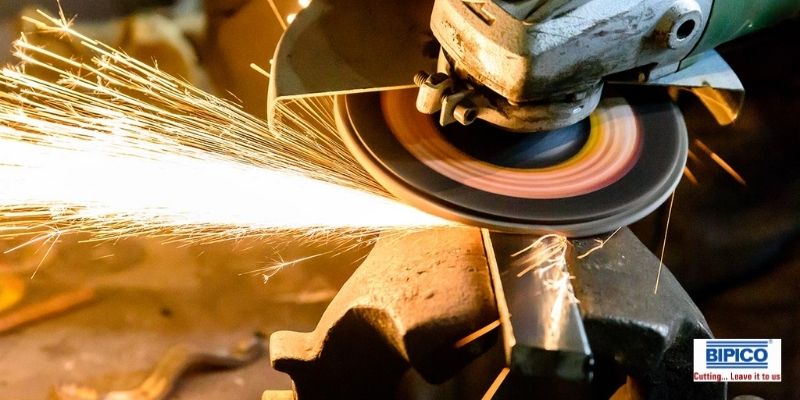The Economic and Safety Benefits of Cutting and Grinding Abrasives
In the world of manufacturing and construction, precision and efficiency are paramount. The tools and equipment used play a crucial role in achieving these goals. Among these tools, cutting and grinding abrasives stand out as essential components. Due to their versatility and effectiveness, they are widely employed in various industries, from metalworking to construction. This article delves into the economic and safety benefits of cutting and grinding abrasives in industrial settings.
I. Enhanced Efficiency and Productivity
Rapid Material Removal
One primary advantage of cutting and grinding abrasives is their ability to remove excess material swiftly. This is particularly critical in industries where precision and speed are vital, such as automotive manufacturing, aerospace, and shipbuilding. Advanced abrasives can create complex shapes with remarkable accuracy and in record time.
Reduced Downtime
Abrasive tools, when properly maintained, exhibit exceptional durability and longevity. This translates to reduced downtime for maintenance and replacement, leading to increased productivity. Workers can focus on tasks without frequent interruptions, ultimately contributing to higher output and profitability.
II. Cost-Effectiveness
Long tool life
High-quality cutting and grinding abrasives have a longer lifespan compared to conventional tools. This longevity minimizes the frequency of replacements, resulting in substantial cost savings over time. Moreover, the extended tool life means that businesses can allocate their resources to other critical areas of operation.
Energy Efficiency
Abrasive tools are engineered for efficiency, especially those designed with advanced technologies. They consume less energy compared to traditional cutting and grinding methods. This reduces operational costs and contributes to a more sustainable and environmentally friendly production process.
III. Precision and accuracy
Fine Detailing and Finishing
Modern abrasives are engineered to provide impeccable precision and accuracy. This is particularly crucial in industries that demand intricate detailing and a superior finish, such as jewelry making, surgical instrument manufacturing, and aerospace engineering. The fine abrasives allow for exacting work without compromising the integrity of the material.
Consistent Results
Cutting and grinding abrasives offer consistency that is challenging to achieve with conventional tools. This uniformity in results is crucial in industries where even slight variations can lead to significant defects or inefficiencies.
IV. Safety Benefits
Reduced generation
Advanced abrasives are designed to minimize heat generation during the cutting and grinding. This is particularly important in industries with heat-sensitive materials, as it reduces the risk of material deformation or structural damage risk.
Lower vibration levels
Compared to traditional cutting and grinding methods, abrasive tools produce lower vibration levels. This enhances worker comfort and reduces the risk of repetitive stress injuries, contributing to a safer working environment.
V. Versatility and adaptability
Multi-Material Capabilities
Cutting and grinding abrasives are versatile tools capable of working on a wide range of materials, including metals, ceramics, composites, and even certain types of stone. This versatility allows businesses to use a single tool for various applications, reducing the need for specialized equipment and enhancing cost-effectiveness.
Adaptability to Different Environments
Abrasive tools can be tailored to suit different working environments. For instance, wet-cutting and grinding methods can be employed in environments where dust and debris control are crucial. This adaptability ensures that these tools can be effectively used in diverse industrial settings.
VI. Environmental Benefits
Minimized Material Waste
Cutting and grinding abrasives enable precise material removal, resulting in minimal waste. This is especially significant in industries where raw materials are expensive or difficult to source. Additionally, less waste means a reduced environmental impact, aligning with sustainable manufacturing practices.
Reduced Chemical Usage
In certain applications, using abrasives can eliminate the need for chemical treatments or coatings. This streamlines the production process and reduces the use of potentially hazardous chemicals, promoting a safer and more environmentally friendly workplace.
VII. Innovation and Technological advancements
Ongoing Research and Development
The cutting and grinding abrasives continuously evolve with ongoing research and development efforts. This creates more efficient and specialized tools that address specific industry needs. Embracing these innovations can give businesses a competitive edge and open new growth opportunities.
Integration with Automation
Modern abrasive tools are increasingly compatible with automated systems. This integration enhances efficiency, precision, and safety by allowing more precise control over the cutting and grinding processes. As automation becomes more prevalent in industry, its compatibility with abrasives will become increasingly valuable.
Conclusion
Using cutting and grinding abrasives represents a significant leap forward in industrial processes. Their economic benefits, including enhanced efficiency, cost-effectiveness, and precision, make them indispensable in various industries. Moreover, their safety benefits contribute to a safer and more comfortable working environment. As technology advances, we expect even more sophisticated abrasives to revolutionize the manufacturing and construction sectors, further driving economic growth and progress. Embracing these innovations is a matter of staying competitive and ensuring a more sustainable and efficient future for industries worldwide.






Comments
Post a Comment